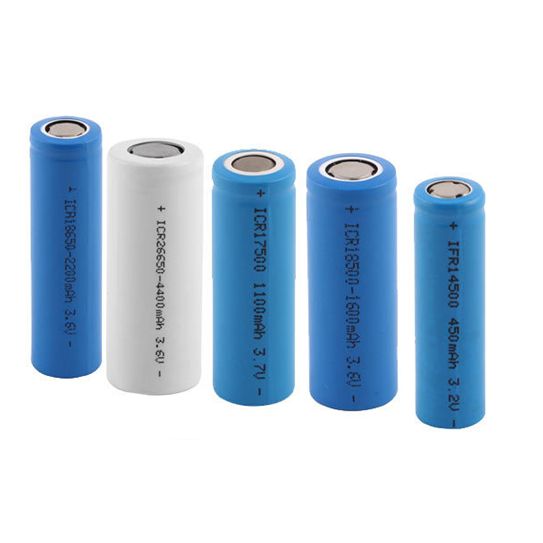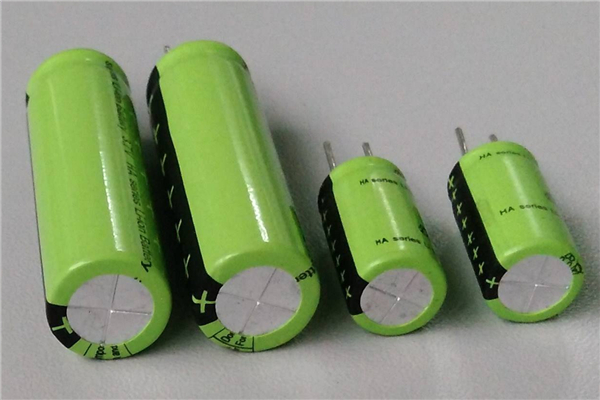18650 Battery Meaning
Aug 01, 2019 Pageview:3109
Introduction
Lithium ion batteries constitute the latest generation of battery technology. You might have heard about this impressive battery technology but maybe you don’t know beyond that. This is very understandable because consumers have a difficulty of being up to date with the ever-changing battery technology in terms of battery sizes. Many consumers are familiar with the common A, AA and AAA battery sizes, but many of the same consumers do not understand the meaning of other the battery size terms, such as the 18650 battery. The meaning of 18650 battery is something that you wish to know so that you can be equipped with information when you are buying this type of battery.
What does the “18650” in 18650 Li-Ion battery mean?
Manufacturers use 18650 as the standard indicating a lithium ion battery size of 18mm by 65mm. in some occasions, you might find a “D” at the end of every 18650, which really detonates the shape of the battery. The zero at the end simply means it is cylindrical.
There is a lot of inconsistencies which are about the alterations of the size of 18650s in the labels and packaging. This has created a lot of confusion among consumers, but fortunately, the manufacturers are working to bring about uniform production standards that will help eliminate the size confusion.
A 18650 is a lithium ion rechargeable battery. There are two types of 18650 Li-Ion battery; protected and unprotected.
The 18650 protected lithium-ion battery has an electronic circuit which is embedded in the battery casing. The battery casing protects the inner components from the heat that can be caused by charging or over discharging, overcurrent and short circuit. This makes the 18650 protected battery safer than a 18650 unprotected battery.
The unprotected 18650 battery is usually cheaper and should only be used where load or draw and charging is monitored and controlled externally. The protected 18650 batteries usually have a button top.
The 18650 has a nominal voltage of 3.7 can store about 2 Ah to a maximum of 3Ah power. Also, this battery should not be discharged below 3.0 in most cases. The complete voltage range for most 18650s is between 2.5 volts and 4.2 volts. Going above this range during charging or discharging can lead to the generation of heat, smoke, fire or even explosion.
What are 18650 batteries used for?
18650s have multiple uses including in flashlights, electronics, vaping devices and even electronic vehicles. There are some high lumen flashlights that use the 18650 batteries. Laptops and other electronic devices can use one or more 18650 batteries.
Why is 18650 battery so popular?
The new battery technology of lithium ion has presented many advantages to consumers. There are many studies going on whereby researchers are trying to discover additional ways to use the 18650 battery. This has led to an increase in the production of these batteries. As production increases, the costs are going down. The declining costs are one of the factors that are contributing to the increasing popularity of the 18650 batteries. These batteries are loved for their durability and high performance.
Long-lasting power
18650 batteries provide long-lasting power. They have actually been tested against other batteries that can charge similar devices and it has been established that they can discharge at a slower rate and perform reliably for longer periods. The longevity of these batteries has made the preferred batteries for powering devices that consumers need to use in emergencies, such as flashlights.
High energy density
Lithium ion batteries have a high energy density and this one of the most important components of a battery quality that are preferred by consumers. The 18650 lithium ion battery actually has more than twice the energy density of nickel-cadmium batteries. Higher energy density ensures that the electrodes are performing at their best. Also, higher density ensures little or no maintenance, therefore, making them the perfect choice for consumers.
No memory
Lithium ion batteries do not have memory and therefore, you do not have to discharge the battery first before charging. Additionally, they do not require any regular cycling in order to extend their shelf life.
They have multiple uses
Today, consumers are looking for batteries they can use in a variety of ways. 18650 batteries have many uses, and continuous advancements in technology are leading to the discovery of even more uses. The 18650s have always been popular in laptops and flashlights. They can actually be used in almost all models of laptops and flashlights. Also, it is very possible to find 18650 batteries compatible with e-books, digital cameras and digital camcorders.
Safe
Safety is one of the greatest factors contributing to the huge popularity of 18650 batteries among consumers. Lithium ion battery technology continues to get better and better and this means that the safety of these batteries has greatly improved. Also, the fact that leading manufacturers are involved in the making of lithium-ion batteries, we can expect the safety to reach the highest levels.
Common characteristics of 18650 battery
18650 batteries have varied attributes which range from one manufacturer specifications and model type to the other. However, they do have common characteristics that consumers can rely on in order to establish the merit of using the batteries in their devices. But before acquiring a battery, consumers need to understand what their devices need to power them.
One of the common attributes of the 18650 batteries is that they have the power of 3.7 volts. Also, they are rechargeable. They have a cylindrical shape and battery design that prevents consumers hands and electronic from harmful electrode liquid leaks. These battery packs come with their chargers that contain an automatic off system which safely shuts down charging when the battery reaches the 4.2-volt limit.
18650 battery charging tips
18650 batteries are very reliable because they can be recharged and also they help avoid excessive electronic waste from battery disposal. When it comes to lithium ions batteries, charging must be done correctly according to the correct procedures. Here are several charging tips that you should follow.
·Use the right charger – it is always recommended that you use the original charger your 18650 battery. In fact, this rule applies to all rechargeable batteries. The best thing is that most 18650 batteries come with your own chargers which have been designed to cut off the charging when it gets to the 4.2 limits.
· Charge up to 4.2 volts – you should never charge your battery past 4.2 limit, which is the maximum limit. Charging past that can lead to increasing temperatures which can cause irreversible damage to the cells.
· Limit charge current to about 0.5C, or as specified – your charge current should never go beyond the specified level to prevent stressing your battery which can lead to an increase in temperatures and damage to the cells. High charge current will reduce the cycle life of your battery.
· Limit charge and discharge temperature – limiting the charge and discharge temperature prevents heat loss and allows the battery to function optimally. You should never charge your 18650 battery below freezing. Also under normal use, your battery should not get hot-to-touch.
· Do not discharge below 3.0 volts – 18650 lithium-ion battery should never be discharged below the 3 volts, so as to prevent damage to the cells when recharging.
· Do not overcharge – you should not overcharge your battery if you are concerned about the cycle life of your battery. You might not even charge it fully. Instead, you might want to do to a partial charge. This ensures less stress on your cell and increased cycle life. Overcharging can increase the capacity, but it is dangerous and of course, it will reduce your battery cycle life.
Conclusion
Manufacturers use 18650 to indicate the size of a lithium ion battery which of size 18mm by 65mm. the 18650 batteries have many uses including in laptops, flashlights and digital cameras. They have become popular among consumers for their high energy density, longevity and safety. Charging 18650 batteries should always be done correctly.
- Prev Article: Discussion Of 18650 Battery Vs AA Battery
- Next Article: Discussion On The Best Lithium AA Batteries
Leave Message
Hottest Categories
-
Hottest Industry News
-
Latest Industry News











